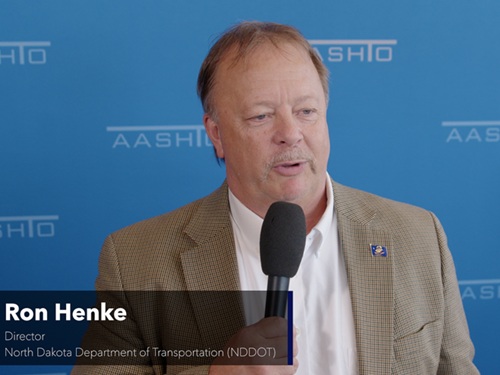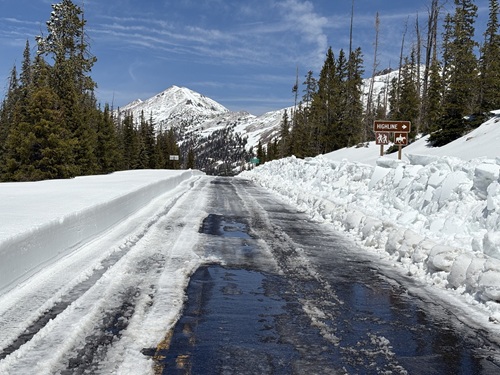An annual survey conducted by the Associated General Contractors of America and construction software provider HCSS found that 60 percent of highway contractors experienced work zone crashes over the past year – despite a decline in vehicular traffic due to the COVID-19 pandemic.
[Above photo by WSDOT]
“The men and women of the construction industry are frequently working just a few feet, and sometimes inches, away from speeding vehicles,” explained Ken Simonson, AGC’s chief economist and author of the annual survey, in a statement.

He noted that the pandemic-induced decline in vehicle traffic appears to have had little impact on work zone safety. He noted that only one-third of survey respondents reported any apparent increase in safety because of lower traffic levels. Concurrently, an equal number of contractors reported that lower traffic levels made conditions less safe, by encouraging many motorists to drive at faster speeds.
[Editor’s note: AGC based its work zone study on a nationwide survey of highway construction firms conducted in April and May. Nearly 300 contractors completed the survey. Click here to view the survey results.]
Various state departments of transportation across the country reported similar work zone safety issues over the past year as well.

For example, the Missouri Department of Transportation said it suffered a “surge” in work zone crashes despite decreased traffic volumes due to the COVID-19 pandemic by mid-2020 – complicating efforts to return the state’s transportation system and economy back to normal.
The agency said by August 2020 some 39 of its truck- and trailer-mounted attenuators – giant, crushable shock absorbers that absorb momentum and reduce the force of vehicle impacts – were hit in work zones since the start of pandemic in March 2020, compared to 19 hits during the same six-month period in 2019.

“We’ve had a 100 percent increase in [attenuator] hits at a time when traffic on Missouri roads has decreased by nearly 50 percent for much of the year,” noted Patrick McKenna, Missouri DOT’s director, in a statement at the time.
McKenna, the 2019-2020 president of the American Association of State Highway and Transportation Officials who now serves as chair of AASHTO’s Committee on Safety, added that “not only an overwhelming figure; it’s also completely avoidable with appropriate driver attention.”
AGC’s Simonson also noted that construction firms are taking steps to improve work zone safety via special training programs, new technology and software made available by firms like HCSS. He stressed, however, that public officials “need to take steps” to improve protections for work zone crews by “boosting police presence” and enacting tougher laws and penalties for drivers using their cell phones.
“Too often, drivers who are distracted, speeding and/or under-the-influence crash into those work zones, putting workers and themselves at risk of serious harm and death,” he added.

The study also noted that 19 percent of contractors participating in the survey experienced crashes that resulted in injury to construction workers. However, nearly twice as many firms – 35 percent – reported experiencing a crash in which drivers or passengers were injured.
Drivers and passengers also are three times more likely than construction workers to be killed in work zone crashes, AGC found. While 4 percent of contractors polled in the survey reported construction worker deaths in work zone crashes, some 12 percent said drivers or passengers were killed in those crashes.
“In many cases, vehicle speeding contributes to these crashes in work zones,” stressed Steve McGough, president and CFO of HCSS. “Utilizing speed cameras with a zero-tolerance policy would go a long way to protect the traveling public and our workforce.”
State DOTs are also testing a variety of ways to improve work zone safety for their crews and those of their contractors.
In March 2020, the Pennsylvania Department of Transportation and the Pennsylvania Turnpike Commission began full enforcement of a statewide automated work zone speed enforcement program, with the goal of “building awareness” among motorists to change unsafe driving behaviors.

“Through the automated work zone speed enforcement program, we are urging motorists to slow down and pay attention while driving, especially through work zones where roadway conditions can change on a daily basis,” said Yassmin Gramian, PennDOT secretary, in a statement at the time.
In February, the Arizona Department of Transportation is testing a “smart work zone” at an existing Interstate 40 bridge project located between Flagstaff and Winslow.
The agency said in a statement that a “smart work zone” is a traffic management system controlled remotely through computer networks, portable message boards, and sensor technology to provide motorists with real-time traffic information as they approach construction work zones.
The Arizona DOT added that it plans to gather crash and vehicle speed data from this “smart work zone” and compared to similar data collected from traditional work zones to evaluate the impact and inform decisions on future highway projects.
 Nation
Nation
North Dakota DOT Profiled in State DOT Update
July 3, 2025 Nation
Nation

